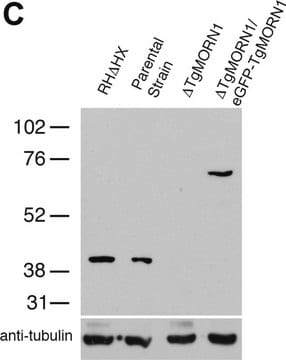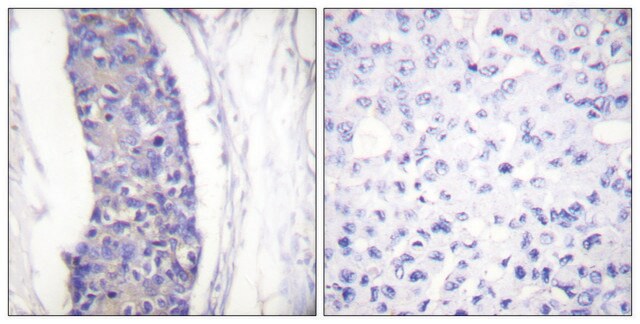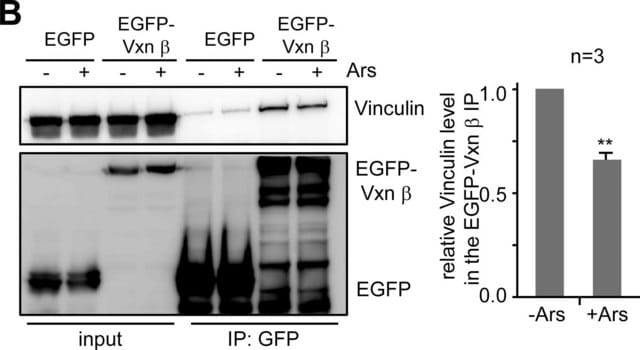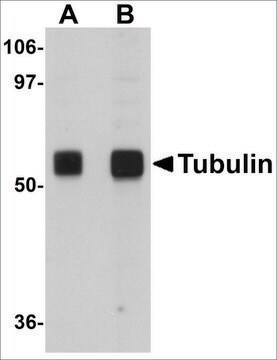T8203
Anti-α-Tubulin antibody, Mouse monoclonal

clone AA13, purified from hybridoma cell culture
Sinónimos:
Anti-Tuba1a, Anti-Tubulin, α1A
About This Item
Productos recomendados
biological source
mouse
Quality Level
conjugate
unconjugated
antibody form
purified immunoglobulin
antibody product type
primary antibodies
clone
AA13, monoclonal
form
buffered aqueous solution
mol wt
antigen ~50 kDa
species reactivity
human, rat, mouse
packaging
antibody small pack of 25 μL
enhanced validation
independent
Learn more about Antibody Enhanced Validation
concentration
~2.0 mg/mL
technique(s)
immunocytochemistry: suitable
immunohistochemistry: suitable
immunoprecipitation (IP): suitable
indirect ELISA: suitable
western blot: 1-2 μg/mL using Neuro-2a cell extract
isotype
IgG1
UniProt accession no.
shipped in
dry ice
storage temp.
−20°C
target post-translational modification
unmodified
Gene Information
human ... TUBA1A(7846)
mouse ... Tuba1a(22142)
rat ... Tuba1a(64158)
General description
The encoded protein structure contains core of two β-sheets enclosed by α-helices. TUBA1A is characterized with an amino-terminal domain with the guanine nucleotide-binding region, an intermediate domain associated with interprotofilament lateral contacts and the modulation of tubulin curvature, and a carboxy-terminal domain that contains region involved in interacting with microtubule-associated proteins (MAPs) and molecular motors, such as kinesins and dynein.
Immunogen
Application
Biochem/physiol Actions
Target description
Physical form
Disclaimer
¿No encuentra el producto adecuado?
Pruebe nuestro Herramienta de selección de productos.
Storage Class
10 - Combustible liquids
flash_point_f
Not applicable
flash_point_c
Not applicable
ppe
Eyeshields, Gloves, multi-purpose combination respirator cartridge (US)
Certificados de análisis (COA)
Busque Certificados de análisis (COA) introduciendo el número de lote del producto. Los números de lote se encuentran en la etiqueta del producto después de las palabras «Lot» o «Batch»
¿Ya tiene este producto?
Encuentre la documentación para los productos que ha comprado recientemente en la Biblioteca de documentos.
Los clientes también vieron
Nuestro equipo de científicos tiene experiencia en todas las áreas de investigación: Ciencias de la vida, Ciencia de los materiales, Síntesis química, Cromatografía, Analítica y muchas otras.
Póngase en contacto con el Servicio técnico











